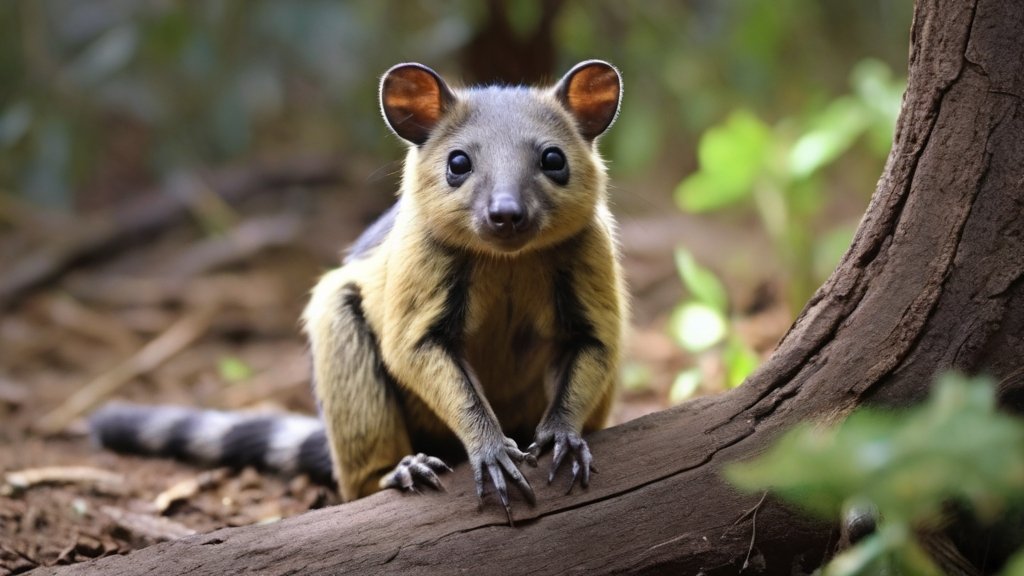The tñacuache, often known in English as the opossum, is an interesting and often misunderstood creature native to the Americas. This small marsupial, commonly found in both rural and urban areas across Latin America, particularly Mexico, plays a significant role in the ecosystem and cultural lore. Despite its importance, the tñacuache is often met with fear or disdain due to its appearance and nocturnal habits. In this article, we’ll explore the biology, behaviour, and cultural significance of the tñacuache, shedding light on why this animal deserves more appreciation and understanding.
What is a Tlacuache?
The tñacuache is a marsupial, which means it is related to animals like kangaroos and koalas, though it is much smaller. The most common species found in Mexico and Central America is the Virginia opossum (Didelphis virginiana). This species is notable for being the only marsupial found in North America.
Tlacuaches have distinctive features that make them easily recognizable: a pointed snout, large dark eyes, and a prehensile tail that they use for grasping branches or carrying nesting materials. Their fur is typically greyish-white, and they have a somewhat scruffy appearance. Adult tñacuache can grow up to 50 centimetres (20 inches) in length, not including the tail, and can weigh between 2 and 6 kilograms (4 to 13 pounds).
The Role of the Tlacuache in the Ecosystem
Despite often being viewed as pests, tñacuache play a crucial role in the ecosystem. They are omnivorous scavengers, meaning they eat a variety of foods, including fruits, insects, small animals, and even carrion. This diet helps control pest populations, such as insects and rodents, which can be beneficial to human environments.
Additionally, tñacuache are known to eat ticks, which helps reduce the spread of tick-borne diseases like Lyme disease. Their scavenging habits also contribute to the ecosystem by cleaning up decaying organic matter, thus helping to maintain environmental balance.
Behaviour and Adaptations
Tlacuaches are nocturnal animals, meaning they are most active at night. This nocturnal lifestyle helps them avoid many predators and human interactions. They are solitary creatures, typically only coming together during the mating season. After mating, the female tñacuache gives birth to a litter of tiny, underdeveloped young that crawl into her pouch to continue developing—a characteristic behaviour of all marsupials.
One of the most famous behaviours of the tlacuache is “playing dead,” or thanatosis. When threatened, a tlacuache may collapse, lying motionless with its mouth open and tongue out, mimicking the appearance of a dead animal. This behaviour is a defence mechanism designed to deter predators, as many animals prefer to hunt live prey.
Another interesting adaptation of the tñacuache is its immunity to certain snake venoms, which allows it to prey on venomous snakes like rattlesnakes without being harmed. This makes the tñacuache a valuable animal in controlling the population of these potentially dangerous reptiles.

Cultural Significance of the Tlacuache
In many Latin American cultures, the tñacuache holds a place in folklore and mythology. For example, in Mexican culture, the tñacuache is often seen as a clever and resourceful creature. One popular tale explains how the tñacuache brought fire to humans. According to the legend, when humans first discovered fire, they didn’t know how to use it properly, so the tñacuache bravely took a burning stick in its tail and carried it to the people, teaching them how to keep warm and cook food. This story is why the tlacuache’s tail is said to be hairless, as it was burned by the fire.
Despite these positive cultural associations, the tlacuache is often feared or disliked in modern times. Its nocturnal habits, scavenging behavior, and somewhat eerie appearance have led to a reputation as a nuisance, particularly in urban areas where they may rummage through rubbish cans or take up residence in attics and basements.
Misconceptions and Human-Wildlife Conflict
Many of the negative perceptions of the tlacuache are rooted in misconceptions. For example, some people believe that tlacuaches are aggressive or dirty animals, but in reality, they are shy and non-aggressive. If confronted, a tlacuache is more likely to flee or play dead than to attack. Moreover, like any wild animal, they maintain cleanliness by grooming themselves regularly.
Human-wildlife conflict often arises when tlacuaches venture into urban areas in search of food or shelter. They may be viewed as pests when they scavenge in garbage or take up residence in human structures. However, these behaviours are often a result of habitat loss and fragmentation, as human development encroaches on their natural habitats.
Coexisting with Tlacuaches
Understanding the role of tlacuaches in the ecosystem and the reasons behind their behaviour can help reduce conflict and foster coexistence. Here are some tips for living harmoniously with tlacuaches:
- Secure Garbage Bins: Use sturdy, animal-proof garbage bins to prevent tlacuaches from scavenging through rubbish. This will discourage them from coming too close to human dwellings.
- Eliminate Food Sources: Avoid leaving pet food or other food sources outside overnight, as this can attract tlacuaches and other wildlife.
- Seal Entry Points: Inspect your home for potential entry points, such as gaps in the roof, attic, or basement, and seal them to prevent tlacuaches from making their way inside.
- Appreciate Their Role: Recognize the positive role that tlacuaches play in controlling pests and cleaning up the environment. By understanding their ecological importance, we can learn to appreciate these unique creatures rather than fear them.
Conclusion
The tlacuache is a remarkable and resilient creature that plays an important role in the ecosystems of the Americas. While often misunderstood, these marsupials are valuable contributors to pest control and environmental balance. By dispelling myths and embracing coexistence, we can ensure that the tlacuache continues to thrive in both rural and urban landscapes, maintaining its place in the natural and cultural heritage of the regions it inhabits.







